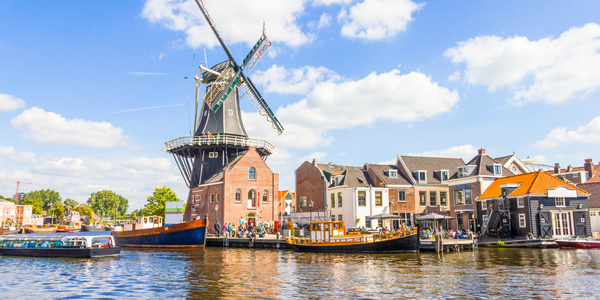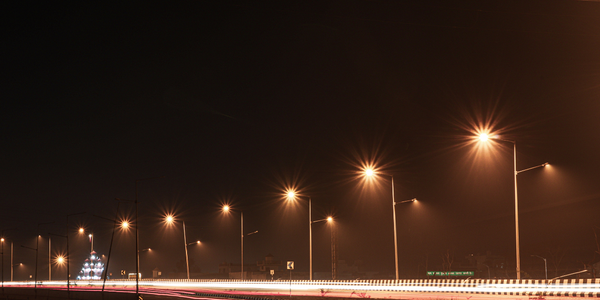Customer Company Size
Large Corporate
Region
- Europe
Country
- United Kingdom
Product
- Dynatrace
Tech Stack
- AI
- Intelligent Observability
Implementation Scale
- Enterprise-wide Deployment
Impact Metrics
- Productivity Improvements
- Customer Satisfaction
Technology Category
- Analytics & Modeling - Real Time Analytics
Applicable Industries
- Cities & Municipalities
Applicable Functions
- Business Operation
Use Cases
- Root Cause Analysis & Diagnosis
Services
- System Integration
About The Customer
Fife Council is the third largest local authority in Scotland, employing around 17,500 people who serve over 360,000 residents. As a unitary authority, the council is responsible for everything from street lighting and bin collections to social housing, education, and social work services. The council relies on a variety of third-party platforms to manage its wide range of services and business functions. Legacy systems are being replaced over time as Fife continues to invest in digital solutions to modernize public services and customer transactions. The council is also under pressure to drive efficiency throughout the public sector, which is putting increasing pressure on support teams like the IT service.
The Challenge
Fife Council, the third largest local authority in Scotland, was facing challenges with its third-party platforms used to manage a wide range of services and business functions. The council was undergoing a digital transformation, replacing legacy systems with modern solutions. However, the drive for efficiency was putting pressure on the IT service team, who had to support transformation while maintaining existing systems. Large scale project implementations and systems deployed to thousands of network users often faced error messages and performance issues. Without effective root cause analysis, it was difficult for the council team or its service providers to identify the source of the issues to resolve them.
The Solution
Fife Council turned to Dynatrace for an intelligent observability solution to overcome these issues and accelerate service improvements. With Dynatrace, Fife has been able to improve the performance of both desktop case management solutions and mobile applications used by workers in the field. Dynatrace’s advanced AIOps capabilities have also enabled Fife Council to operate more efficiently. The Dynatrace platform is managed by just one staff member, where the previous approach required up to ten people, who can now refocus their efforts on more value-driving work. Fife Council’s ultimate goal is for any new tier one application that comes online to be automatically instrumented with Dynatrace for observability. The council also aims to integrate Dynatrace with its IT service management platform, so relevant teams can be automatically alerted to issues, as well as root causes, so they can be resolved before users are impacted.
Operational Impact
Quantitative Benefit

Case Study missing?
Start adding your own!
Register with your work email and create a new case study profile for your business.
Related Case Studies.

Case Study
Turning A Stadium Into A Smart Building
Honeywell created what it called the “intelligent system” for the National Stadium in Beijing, China, turning the venue for the opening and closing events at the 2008 Summer Olympics into a “smart building.” Designed by highly controversial artist Ai Weiwei, the “Bird’s Nest” remains one of the most impressive feats of stadium architecture in the world. The 250,000 square meter structure housed more than 100,000 athletes and spectators at a time. To accommodate such capacity, China turned to Honeywell’s EBI Integrated Building Management System to create an integrated “intelligent system” for improved building security, safety and energy efficiency.
.png)
Case Study
Smart Street Light Network (Copenhagen)
Key stakeholders are taking a comprehensive approach to rethinking smart city innovation. City leaders have collaborated through partnerships involving government, research institutions and solution providers. The Copenhagen Solutions Lab is one of the leading organizations at the forefront of this movement. By bringing together manufacturers with municipal buyers, the Copenhagen Solutions Lab has catalyzed the development and deployment of next-generation smart city innovations. Copenhagen is leveraging this unique approach to accelerate the implementation of smart city solutions. One of the primary focus areas is LED street lighting.

Case Study
Buoy Status Monitoring with LoRa
The Netherlands are well-known for their inland waterways, canals, sluices and of course port activities. The Dutch Ministry of Infrastructure indicates that there are thousands of buoys and fixed items in and near water environments that would profit from IoT monitoring. One of the problems with buoys for example, is that they get hit by ships and the anchor cable breaks. Without connectivity, it takes quite some time to find out that something has happened with that buoy. Not to mention the costs of renting a boat to go to the buoy to fix it. Another important issue, is that there is no real-time monitoring of the buoys at this moment. Only by physically visiting the object on the water, one gains insight in its status.

Case Study
Barcelona Case Study
Barcelona’s heavy traffic and its associated high levels of pollution were the primary factors that motivated some companies and universities to work on strategies for improving traffic in the city centre. Bitcarrier is one of the technologies involved in the In4Mo Project, whose main objective is to develop the applications that form the core of smart mobility, one of the fundamental pillars of the smart city concept.

Case Study
China Mobile Smart Parking
Smart Parking, powered by NB-IoT technology, is making it easier for drivers to find free parking spots. Cities can better manage their parking assets and maximize the revenue available to them as a result. Drivers searching for parking create congestion and pollution by circling and hunting for available parking. Smart Parking services are able to significantly ease these problems by guiding a driver directly to a parking space.








